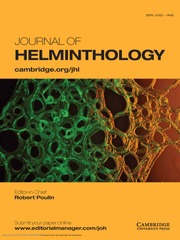No CrossRef data available.
Article contents
Integrative taxonomy and phylogenetic relationships between representatives of genera within Merliniinae (Nematoda: Merliniidae), with new data on fourteen known and one unknown species
Published online by Cambridge University Press: 30 November 2023
Abstract
The application of integrative taxonomic approaches is useful to species delineation based on a combination of distinct types of characters, here morphological features and ribosomal DNA sequences. In this study, we surveyed ectoparasitic nematodes of the subfamily Merliniinae in cultivated and natural environments in Iran. Results of morphological and morphometrical studies, light and scanning electron microscopic observations, and molecular analyses allowed us the identification of fourteen known and one unknown species including representatives of the genera Amplimerlinius (five species), Geocenamus (one species), Merlinius (three species), Nagelus (two species), Paramerlinius (one species), Scutylenchus (two species), and Telomerlinius (one species). The unknown species, Scutylenchus sp., characterized by having 35–50 incisures at mid-body; lateral field with 6 longitudinal incisures; lip region slightly offset by a constriction, flattened at front end; bearing 5–7 annuli; cephalic framework not refractive; stylet robust, 18.3–27 μm long; post anal intestinal sac absent; tail elongate conical, dorsally convex, with 24 (19–28) annuli in ventral side, ending to a smooth terminus and males common; spicules 24.5–31 μm long. The phylogenetic analyses were carried out using molecular data from nuclear ribosomal DNA (rDNA) genes viz. D2–D3 expansion segments of the large ribosomal subunit (28S rRNA), partial small ribosomal subunit (18S rRNA), and internal transcribed spacer (ITS). The molecular variability of D2–D3 expansion segments of the 28S rRNA and partial 18S rRNA was low in this family in comparison to the ITS region, which could be a more helpful molecular marker in species and genus identification.
Information
- Type
- Research Paper
- Information
- Copyright
- © university of Zanjan, 2023. Published by Cambridge University Press

